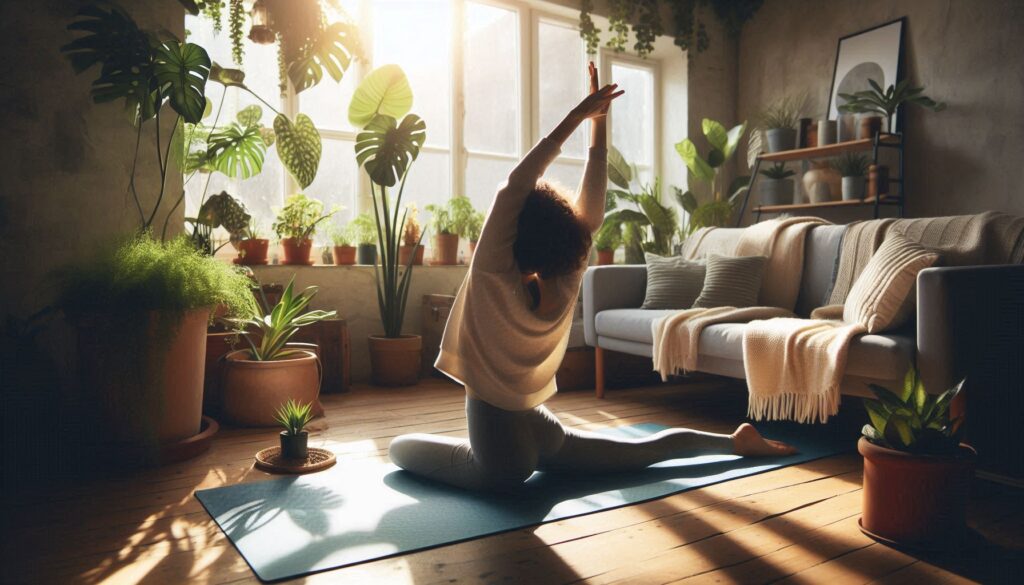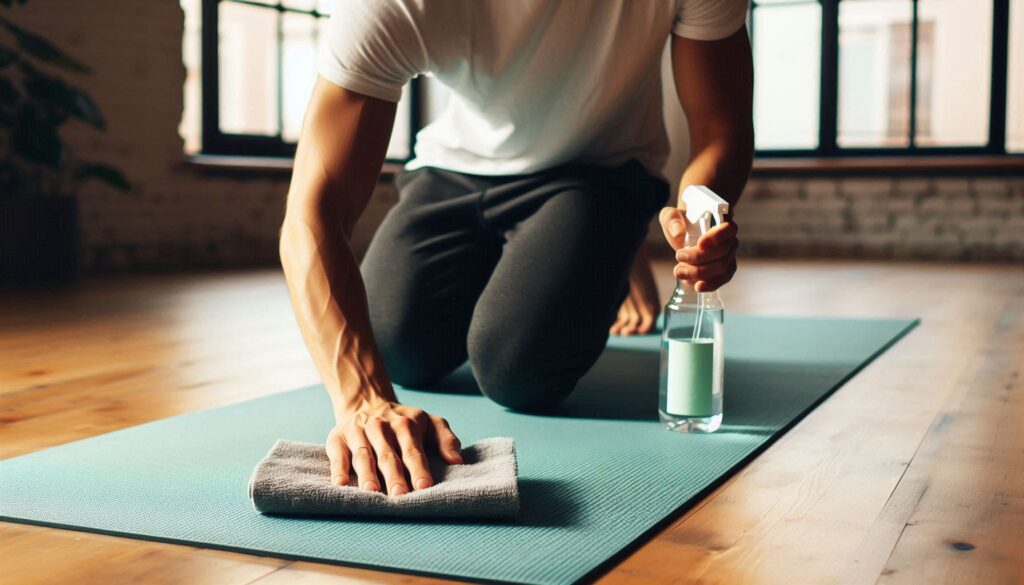Your yoga mat is more than just a surface—it’s the foundation of your practice. A thoughtfully chosen mat can enhance stability, comfort, and focus, allowing you to perform poses safely and effectively. With a range of options available, selecting the perfect yoga mat can feel overwhelming. In this guide, we’ll cover practical tips to help you find a mat that meets your needs and preferences, whether you’re attending yoga classes, practicing at home, or mastering a new yoga pose.
If you’re looking to enhance your practice at home, check out our guide to Home Office Furniture for creating a dedicated, productive space.
Why a Yoga Mat Matters
Your mat is essential for ensuring a safe and comfortable practice. It provides:
- Stability for Poses: Essential for balance-intensive poses like Warrior or Tree Pose.
- Cushioning: Protects your joints during seated or kneeling postures.
- Non-Slip Grip: Keeps you grounded, even during sweaty sessions.
A well-chosen mat makes each yoga pose feel more supported, helping you get the most out of your sessions.

Features to Look for in a Yoga Mat
To find the right equioement, focus on these key features:
1. Material Matters
The material affects durability, grip, and eco-friendliness.
- PVC: Long-lasting and offers great grip but isn’t environmentally friendly.
- TPE (Thermoplastic Elastomer): Lightweight, recyclable, and soft.
- Natural Rubber: A sustainable option with excellent traction but slightly heavier.
Pro Tip: Opt for natural materials if sustainability is a priority, or PVC for budget-friendly durability.
2. Thickness and Comfort
Yoga mats range from thin travel styles to extra-thick options.
- Thin Mats (1/16-inch or ~1.5 mm): Ideal for portability and poses that require a strong floor connection.
- Standard Mats (1/8-inch or ~3 mm): Great all-around choice for most practitioners.
- Thick Mats (1/4-inch or ~6 mm): Suitable for those with sensitive joints or who practice on hard surfaces.

3. Texture and Grip
- Smooth Mats: Comfortable for gentle yoga but may become slippery with sweat.
- Textured Mats: Prevent slipping, making them ideal for dynamic or hot yoga sessions.
Pro Tip: Choose a textured mat if you sweat easily or practice vigorous styles like Power Yoga.
Yoga Mats for Different Needs
Different practices call for different types of mats.
- For Beginners: Look for a mat with alignment guides to help with positioning during yoga poses.
- For Hot Yoga: Choose a mat with extra grip or moisture-absorbing material.
- For Travel: A lightweight and foldable mat is ideal.
Recommendation: Check out options like the Eco-Friendly Yoga Mat or Hot Yoga Non-Slip Mat for tailored solutions.

Maintaining Your Mat
Keep your mat clean and in good shape with these tips:
- Wipe it Down Regularly: Use a gentle cleaner or a mix of water and vinegar.
- Avoid Direct Sunlight: This can cause some materials to degrade over time.
- Store it Properly: Roll it loosely and keep it in a cool, dry place.

Enhancing Your Practice with the Right Mat
Selecting the right yoga equipement can transform your practice, offering the support and comfort needed for confidence in every yoga pose. A quality mat is a long-term investment in your health and well-being.
If you’re looking for additional tools to boost your home practice, explore our guide on Yoga Apps for expert-led sessions.
Finding the best mat is about understanding your needs and priorities, from material and grip to thickness and portability. Whether you’re deepening your practice or just starting yoga classes, the right mat will provide the foundation you need to stay comfortable and focused.
